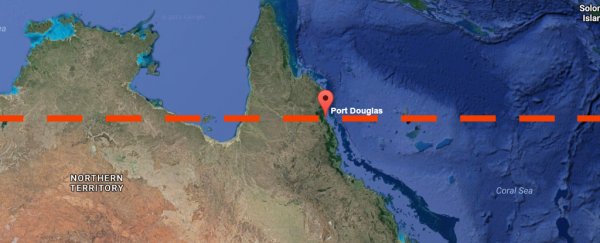It's been six months since Australia's Great Barrier Reef experienced its worst coral bleaching event on record in March, when more than 93 percent of the reef turned white due to unseasonably warm ocean temperatures.
Researchers have now gone back to assess the long-term damage to see how well the reefs have bounced back, and it's not good news. The survey has shown that most of the corals above Port Douglas - which is around a third of the Great Barrier Reef - are now dead.
Around Lizard Island, which is further north, there is less than 5 percent coral coverage left.
"What we're seeing now is lots and lots of dead corals," lead researcher Andrew Baird from the ARC Centre of Excellence for Coral Reef Studies at James Cook University in Australia, told ABC Science.
"On most of the sites around Lizard Island between 80 to 100 percent of corals are gone - there's not much coral at all, north of Port Douglas".
Coral bleaching occurs when the tiny algae that live within corals get ejected due to stress.
These little algae are responsible for the beautiful and vibrant colours of corals, and they're also essential for feeding the corals - they provide food in return for shelter in the corals' tissue.
When water temperatures get too warm, the corals become stressed and eject the algae, leaving the coral bone white. If a coral doesn't resettle an algae population quickly, then it will be more vulnerable to destruction from predators and disease, and will eventually starve to death.
For many of the reefs north of Port Douglas, this is what has happened following the March bleaching event. And while there's a "slim chance" that some of these corals could regenerate, it's not looking good, particularly with Australia entering its summer months once more and water temperatures rising.
"Millions of corals in the north of the Great Barrier Reef died quickly from heat stress in March and since then, many more have died more slowly," one of the team, Greg Torda, said in a press release.
The latest survey involved returning to the same 83 reefs that were observed back in March to see the progress, and analysis will continue until mid November. But the results so far are clear.
"Six months after the peak bleaching, the corals now have either regained their algal symbionts and survived, or they have slowly starved to death without the nutrition the algae provide to them," said Torda.
"On the reefs we surveyed close to Lizard Island, the amount of live coral covering the reef has fallen from around 40 percent in March, to under 5 percent now."
Those reefs that have survived are now also being preyed upon by snails that eat live coral, so the team said the survivors were in "poor shape".
The news is better down south. Below Port Douglas, most of the reefs seems to have bounced back and remain in good condition.
"As we expected from the geographic pattern of bleaching, the reefs further south are in much better shape," said Baird.
"There is still close to 40 percent coral cover at most reefs in the central Great Barrier Reef, and the corals that were moderately bleached last summer have nearly all regained their normal colour."
Baird admits that there's a "slim chance" the reef above Port Douglas could regenerate in the future, but only if the southern two-thirds of the reef stay healthy from now on.
"There's still a lot of reef here which could supply the propagules for the reef up north to recover, but it's likely to take a very long time because the scale of the event around Lizard Island and further north was so large," he told ABC Science.
"It will also depend on it not bleaching again, particularly in those areas that are still in good condition."
The final death toll from March's bleaching event won't be known until all the surveys are completed, and the research still needs to be peer-reviewed and published before we can be sure.
But for now, things aren't looking good, and the researchers admit this is the worst bleaching event on record for the Great Barrier Reef.
Hopefully the loss of such an important natural resource will make people aware that we can never let this happen again.

